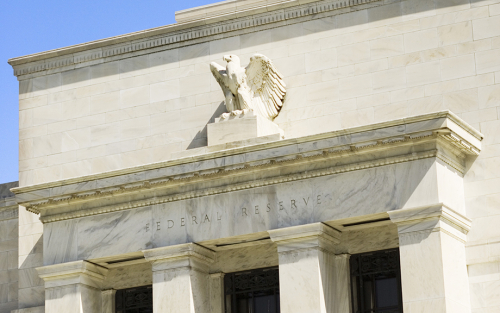Is There Too Much Business Debt?

Anna Kovner and Brandon Zborowski By many measures nonfinancial corporate debt has been increasing as a share of GDP and assets since 2010. As the May Federal Reserve Financial Stability Report explained, high business debt can be a financial stability risk because heavily indebted corporations may need to cut back spending more sharply when shocks […]
New China Tariffs Increase Costs to U.S. Households
Just Released: Press Briefing on the Evolution and Future of Homeownership
The New York Fed today held a press briefing on homeownership in the United States, in connection with its release of the 2019 Survey of Consumer Expectations Housing Survey. The briefing opened with remarks from New York Fed President John Williams, who provided commentary on the macroeconomic outlook and summarized the prospects for homeownership.
How Has Germany’s Economy Been Affected by the Recent Surge in Immigration?

Germany emerged as a leading destination for immigration around 2011, as the country’s labor market improved while unemployment climbed elsewhere in the European Union. A second wave began in 2015, with refugees from the Middle East adding to already heavy inflows from Eastern Europe. The demographic consequences of the surge in immigration include a renewed rise in Germany’s population and the stabilization of the country’s median age. The macroeconomic consequences are hard to measure but look promising, since per capita income growth has held up and unemployment has declined. Data on labor-market outcomes specific to immigrants are similarly favorable through 2015, but challenges are evident in how well the economy is adjusting to the second immigration wave.
Understanding Cyber Risk: Lessons from a Recent Fed Workshop

Cyber risk poses a major threat to financial stability, yet financial institutions still lack consensus on the definition and terminology around cyber risk, and lack a common framework for confronting these hazards. This impedes efforts to measure and manage such risk, diminishing institutions’ individual and collective readiness to handle system-level cyber threats. In this blog post, we describe the proceedings of a recent workshop, where leading risk managers, academics, and policy makers gathered to discuss proposals for countering cyber risk. This workshop is part of a joint two-phase initiative between the Federal Reserve Banks of Richmond and New York and the Fed’s Board of Governors to harmonize cyber risk identification, classification, and measurement practices.
Did Changes in Economic Expectations Foreshadow Swings in the 2018 Elections?

In our previous post, we looked at political polarization in economic expectations based on county-level results in the 2016 presidential election. In this post, we analyze how expectations leading up to and following the 2018 midterm elections evolved based on how districts voted in the House of Representatives elections. Do we see a similar post-election change in political polarization of beliefs when comparing congressional districts in which a Republican won in 2018 with those won by a Democrat? Were observed changes in expectations leading up to the 2018 elections systematically different in areas where the election resulted in a change in the party holding the House seat? We show that economic expectations deteriorated notably between the 2016 and 2018 elections in districts that switched from Republican to Democratic control, compared to districts that remained Republican.
Just Released: Shifts in Credit Market Participation over Two Decades
Economic Expectations Grow Less Polarized since the 2016 Election

In two previous blog posts (here and here), we examined political polarization in economic expectations in the period immediately after the 2016 presidential election. Today, we begin a two-part series that revisits the issue. In this post, we provide an update on how economic expectations have evolved in counties that voted for Donald Trump in 2016 and counties that voted for Hillary Clinton.
Ten Years Later—Did QE Work?

By November 2008, the Global Financial Crisis, which originated in the residential housing market and the shadow banking system, had begun to turn into a major recession, spurring the Federal Open Market Committee (FOMC) to initiate what we now refer to as quantitative easing (QE). In this blog post, we draw upon the empirical findings of post-crisis academic research–including our own work–to shed light on the question: Did QE work?
Selected Deposits and the OBFR
In this Liberty Street Economics post, Cipriani and coauthors discuss changes in the calculation of the Overnight Bank Funding Rate (OBFR), the reason for including selected deposits, and the likely impact of the change on the OBFR’s published value.












 RSS Feed
RSS Feed Follow Liberty Street Economics
Follow Liberty Street Economics